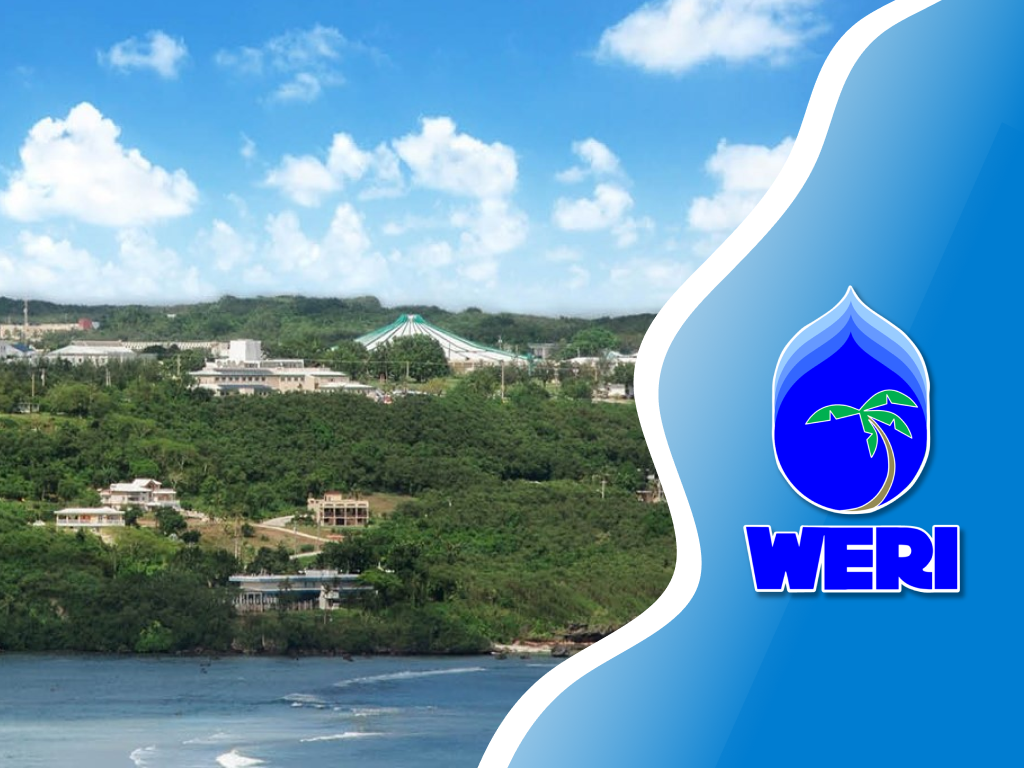
Dr. Nathan Habana, a hydrologist at the University of Guam’s Water and Environmental Research Institute (WERI), unveiled groundbreaking updates to the Surface Hydrology of Southern Guam project during the Guam Educators Conservation Summit (GECS) at the Hyatt Regency Hotel. Hosted by WERI’s longtime partner, the Guam Soil and Water Conservation District (GSWCD), the summit empowers educators with innovative strategies to integrate conservation, sustainability, and STEM into classrooms while addressing Guam’s environmental challenges.
Mapping Guam's Water Systems with Precision
Building on WERI’s foundational Surface Hydrology of the Northern Guam Lens Aquifer (Technical Report 175), Dr. Habana’s updated map of southern Guam leverages advanced GIS technology and the 2020 digital elevation model of Guam to delineate over 90 watersheds, plateau basins, and intricate runoff pathways. During his presentation, he guided attendees on a virtual journey from the watersheds north of the Pågu-Adilok Fault, the Sesonyan Watershed, moving counter-clockwise along the coastal watersheds, down-around-and-up, to the Pågu Watersheds. The map’s unprecedented detail—including fill-area depressions, tributary divides, and overflow runoff paths—provides critical insights for managing erosion, flooding, contaminant transport, coastal discharge, and groundwater recharge. The map will also be so useful for development and strategic planning and protection, for Guam EPA, Guam Forest Systems Watershed Planning Committee, and the Guam Coastal Management Program. Habana says that one of the best ways to protect the island’s resources maybe at the surface that having highly detailed surface hydrologic information can help us build better. Habana plans to produce a large print of the map for all interagency partners offices. And next year, he aims to update the northern section to be coupled with the south as one large print surface hydrology map. A technical report by the team, Dr. Leroy Heitz, Dr. Habana, and Ms. Dannika Valerio, is underway and should be available soon.




Reviving Cultural Heritage Through Hydrology
A highlight of the project is its collaboration with Kumision I Fino’ CHamoru, Na’an Lugåt Guahan (Guam’s Chamorro Language Commission and Place Name Committee). By overlaying the latest hydrologic data with the Series W743, Guam, Edition 1-AMS (AFFE), referred to as the1954 Map of Guam, Dr. Habana’s team aligned watershed boundaries with historical CHamoru place names—many of which had been lost over time. Commission members, including Dr. Robert Underwood, Mr. Joseph Constantino, Ms. Maria Flores, and Mr. John Teria, praised the effort to preserve cultural identity. Upon completion, the Kumision will present the map to the legislature, these watershed and plateau basin names could soon become official, reconnecting communities to ancestral landscapes.
Interactive Tools for Educators and Planners
Dr. Habana also debuted WERI’s new MAppFx platform, a dynamic web application offering real-time visualization of Guam’s hydrologic data. Educators explored features like nitrate and chloride levels in production wells, agricultural zones, and groundwater protection areas overlaid on the Northern Guam Lens Aquifer (NGLA) map. The tool, accessible via the Guam Hydrologic Survey (GHS) website, allows users to assess development impacts and conservation strategies with a few clicks.
Next Steps: Public Launch and Training
The finalized southern Guam hydrology map is set for online release by June 2025, with a WERI training workshop scheduled for July. Dr. Habana closed his presentation by inviting attendees to join a Virtual Aquifer Tour in May, offering an immersive exploration of the NGLA’s structure and vulnerabilities.
“This map isn’t just about science—it’s about stewardship,” said Dr. Habana. “By blending traditional knowledge with cutting-edge technology, we’re equipping future generations to protect Guam’s precious resources.”
Educators interested in the Aquifer Tour or hydrology training can register through WERI’s GHS website.

